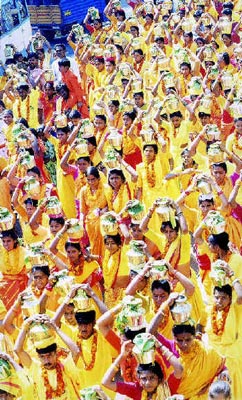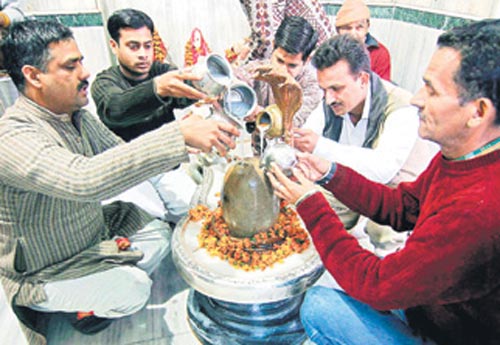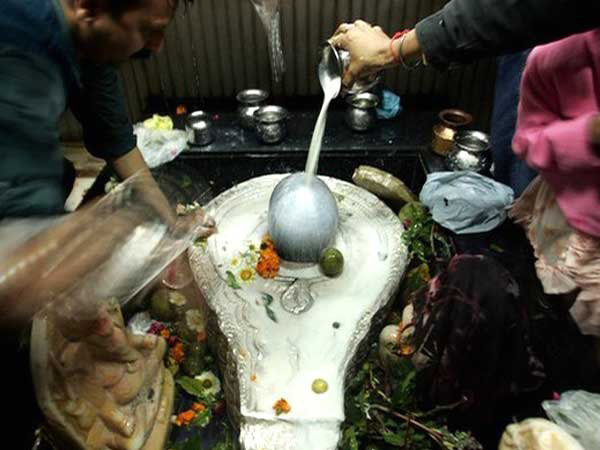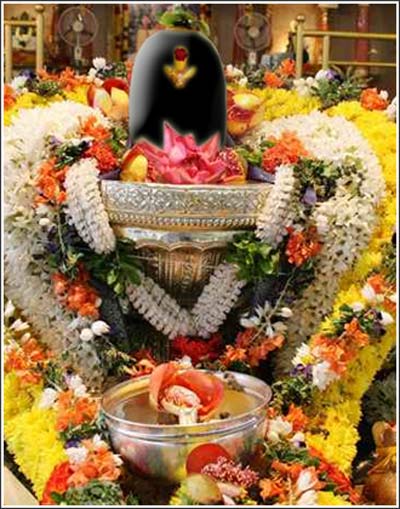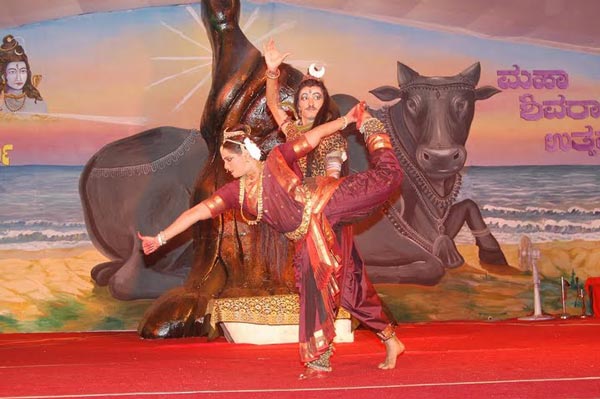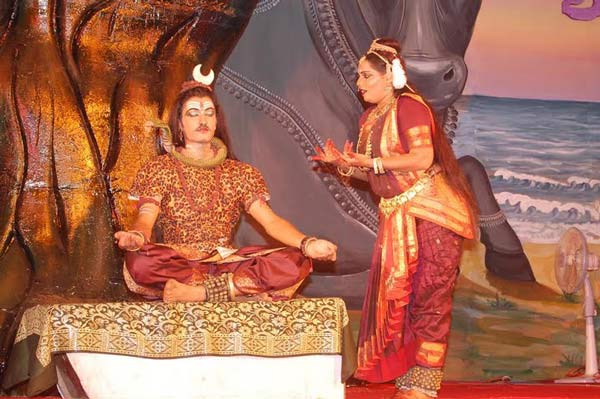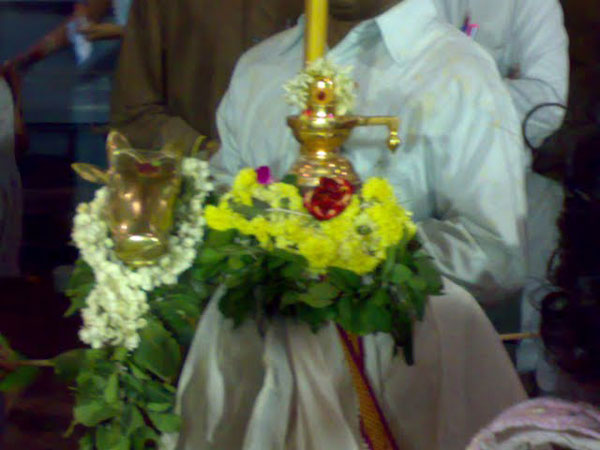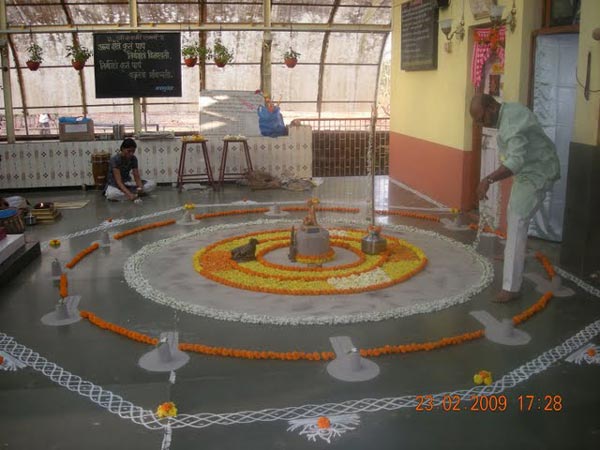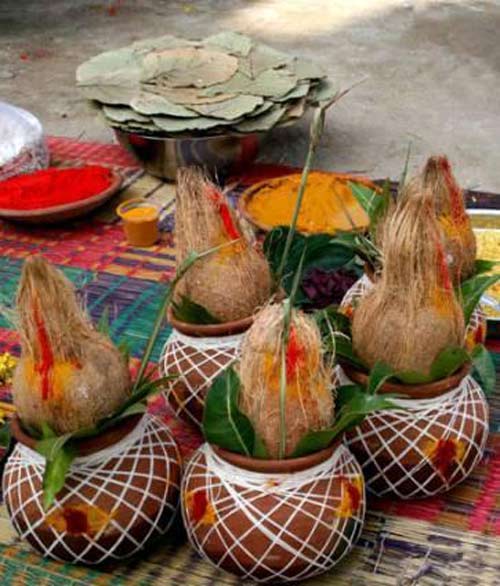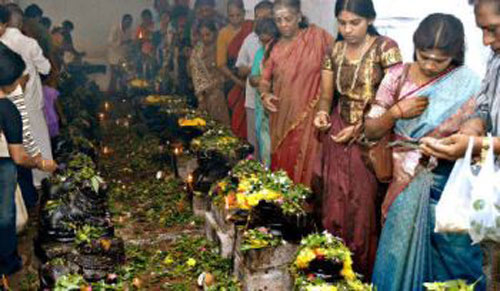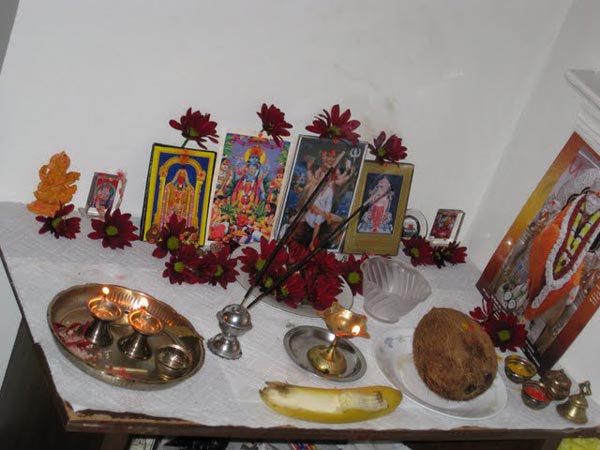Mahashivaratri Festival
Mahashivaratri-Karnataka |
About: |
| Festival of Maha Shivaratri is observed with pomp and enthusiasm in the southern state of Karnataka. A grand Sri Shidlingappa's fair is observed to mark the auspicious occasion. Deity is taken to the river in a palanquin accompanied by drummers (Dollu and Majalu) from several neighboring and is then worshippedReligious fervour and cultural extravaganzas are set to mark the Mahashivaratri festival beginning Monday morning with many programmes lined up for devotees.
Devotees cutting across caste barriers will throng historic temples in the city, particularly the Someshwara in Ulsoor, Gavi Gangadhareshwara in Gavipuram, Mallikarjunaswamy and Dodda Basavanna in Basavanagudi, Rameshwara in Chamarajapet, Kasi Vishwanatha at Balepet, Kadu Malleswara in Malleswaram, Srigeri Shankara Math in Shankarapuram, Avani Sringeri Math near Kurubarahalli, Ramachandrapura Math in Girinagar, Taralabalu Math, Sivaratreeshwara Temple and Banashankari. Many other prominent temples, namely, Meenakshi at Hulimavu, Raja Rajeshwari and Nimishamba at Raja Rajeshwari Nagar off Mysore Road, temples dedicated to Subramanya and Ganesha across the city will also see an increase in the number of devotees.Two tankers carrying water from Ganga Jal from Hrishikesh arrived at the Rameshwara Temple at Chamarajpet here on Sunday and the water was transferred to cans in the presence of Muzrai Minister S.N. Krishnaiah Setty. The cans were then sent to various Muzrai temples across the State for distribution."Jaagarane" entails remaining awake the whole night in prayer and bhajans. In rural areas, young men roam the streets, and time was when any mischief done then was not to be taken seriously.A host of cultural programmes has been lined up to keep devotees awake all night with the Religious and Charitable Endowments Department taking the lead. |
Location info: |
| Address:Karnataka,India |
| District: Karnataka,India |
| Best time to visit: February-March |
Climate/Weather: |
| During winter temperatures range from 32 degrees Celsius to below 20 degrees Celsius,Summer Average temperature is 34 degrees Celsius |
History: |
| According to another legend in the Shiva Purana, once the other two of the triads of Hindu Gods, Brahma and Vishnu, were fighting over who was the superior of the two. Horrified at the intensity of the battle, the other gods asked Shiva to intervene. To make them realize the futility of their fight, Shiva assumed the form of a huge column of fire in between Brahma and Vishnu. Awestruck by its magnitude, they decided to find one end each to establish supremacy over the other. Brahma assumed the form of a swan and went upwards and Vishnu as Varaha went into the earth. But light has no limit and though they searched for thousands of miles, neither could find the end. On his journey upwards, Brahma came across a Ketaki flower wafting down slowly. When asked where she had come from, the Ketaki replied that she had been placed at the top of the fiery column as an offering. Unable to find the uppermost limit, Brahma decided to end his search and take the flower as a witness. |
Importance: |
| Festival of Maha Shivaratri is observed with pomp and enthusiasm in the southern state of Karnataka. A grand Sri Shidlingappa's fair is observed to mark the auspicious occasion. Deity is taken to the river in a palanquin accompanied by drummers (Dollu and Majalu) from several neighboring and is then worshipped. Linagayats, people of the Shiva cult, worship Linga on Shivaratri. Following a tradition, married women wear a linga made of silver or gold on their body. In southern Karnataka, children make believe that they are kings and dole out punishments to all and sundry. This particular tradition is based on the mythological legend related with Shivaratri that narrates the story of Shiva punishing Brahma for lying about measuring the length of Linga. |
Method of Celebration: |
| A night of vigil for Lord Shiva: Lord Shiva Mahashivaratri, which is celebrated on February 16 (Friday) this year, is about worshipping Lord Shiva, whose appeal is strong and persistent in equal measure among all sections of the society. Most Hindu festivals are celebrated during daytime but Shivaratri is all about keeping a night-long vigil as it's believed that Lord Shiva saved the universe from darkness and ignorance. Festival ahimsa and satya: On this day, devotees perform rudrahoma (rudrayaga) at temples and homes. People prepare delicious food items as naivedya to Lord Shiva. By worshipping the Lord, one can attain peace and prosperity, for He forgives the sins we commit in our life.On Shivaratri, Lord Shiva drank poison (haalahala ) produced by the churning of the ocean of milk and, by doing so, saved the universe. He also married Parvathi on this day and performed Shiva Tandava Nritya Wearing a rudraksha: Genuine Rudraksha:
Offering bilvapatra to the Shivpindi and chanting the mantra 'Om Namah Shivaya' with each offering is known as bilvarchan. Continue offering the bilvapatra until the pindi is completely covered. Offer the bilvapatra from the lower part of the pindi. By starting from the feet of the idol, more benefit is derived and the idol can be covered completely Serpent : One of the Names of Lord Shankar is Bhujanga-patihari. Bhujang means a serpent or pure particles (pavitrakas), pati means the nurturer and hari means one with a garland around His neck. Bhujangapatihari thus means the One who nurtures pure particles and wears them like a garland. Various serpents represent groups of pure particles. Though externally they appear like serpents, internally they are a kind of ladder. To make spiritual progress one has to climb up holding onto the tail of the serpent. Lord Shankar adorns serpents at nine points on His body - one on the head, one around the neck, one on each arm, one on each wrist, one around the waist and one on each thigh. This implies that His body is comprised of pure particles or that serpents of pure particles play all over the body of Lord Shankar who has the universe as His form. |
Culture of Festivities: |
| Maha Shivaratri is celebrated throughout the country with great devotion and faith. Shivratri falls on the I3th (or I4th) day of the dark half of 'Phalgun' (February-March). The name means "the night of Shiva". The ceremonies take place chiefly at night. This is a festival observed in honor of Lord Shiva and it is believed that on this day Lord Shiva was married to Parvati. On this festival people worship 'Shiva - the Destroyer'. This night marks the night when Lord Shiva danced the 'Tandav'.
It is celebrated in different manner across the country. This festival of Maha Shivratri is held in great esteem in most of the regions in India but especially in Ujjain in Madhya Pradesh it is observed with great reverence. In Ujjain in the famous temple of Mahakaleshwar Shiv's Lingum is worshipped with the performance of all the religious rites and rituals. Even in atangeshwar at Khajuraho Lord Shiva is worshipped. Grand puja is offered in both the temples and hundreds of devotees throng these places from all over Inia. The Shivalingam of Matangeshwar in Khajuraho is considered to be the biggest in India and is the only temple in the thousand-year-old Khajuraho temple complex where worship still continues. |
How to reach? |
| Nearest Railway Station: |
| Nearest Airport: |
| Road Transport: |
Hotels/Lodge/Accommodation: |
Help Line/Phone Number: |
| Police Station: |
| Nearest Hospital: |
| Society/Community Phone Number: |
| Link: |

